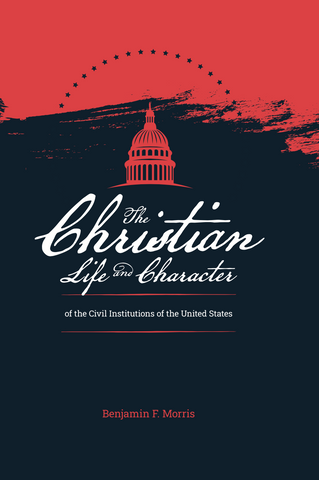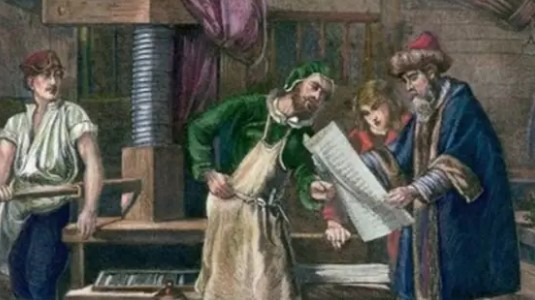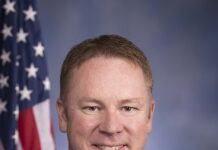The church has a long history of applying the Bible to all of life. “Throughout American history, the moral principles of Judeo-Christian ethics have been used as one of many effective tools to evaluate and reform a wide variety of social structures, and have continued to be invoked in political debates.”[1] This perspective is best exemplified in the life and work of the Puritans who applied the Bible to work, marriage, economics, family, education, politics, social ethics, social action, as well as personal piety, devotion, worship, and theological study. “Puritanism was a movement in which the Bible was central to everything.”[2]
The Puritans demonstrated their belief in a comprehensive biblical worldview in the educational institutions they established. Harvard College, founded in 1636, six years after the arrival of the English Christian colonists to the New World, had as its purpose the following: “Let every student be plainly instructed, and earnestly pressed to consider well, the main end of his life and studies is, to know God and Jesus Christ which is eternal life (John 17:3) and therefore lay Christ at the bottom, as the only foundation of all sound knowledge and learning.” There was no true knowledge unless a student compared it with the testimony of Christ in the Bible. These early Christian educators were following the instructions laid down in the Bible about loving God with the mind (Matt. 22:37; Deut. 6:1-9).“Yale College demanded the same rigorous education as Harvard with the Bible as the unshakable and unassailable foundation: “All scholars shall live religious, godly, and blameless lives according to the rules of God’s Word, diligently reading the Holy Scriptures, the fountain of light and truth; and constantly attend upon all the duties of religion, both in public and secret.” A student’s starting point in the Bible was to affect the way he approached his studies. The Bible was the interpretive grid used to study the world and unravel its mysteries. Knowing that God created the world led these early Christian scientists and students of nature to believe that they lived in a reasonable and orderly universe. “Christ knew Hebrew and used logical consequences,’ Samuel Rutherford (c. 1660–1661) argued. “Paul quoted the heathen poets, ‘in the books of Moses, are secrets of Physick’, Samuel and Kings introduced man to ‘sacred politicks’, and Job taught astronomy. ‘The naturall sinlesse knowledge of sciences, arts, tongues [languages]’ was, therefore, the candlelight by which Christians studied the Bible.”[3]
An example of a Christian who worked to apply the Bible beyond the narrow confines of Christian piety was Cotton Mather (1663–1728). In fact, Mather saw the development of scientific discovery as an outgrowth of his biblical studies. He received his M.A. from Harvard at age 18 and joined his father in his Boston pastorate. He was widely regarded as the most brilliant man in New England. He wrote nearly 500 books and was a Fellow of the Royal Society, a scientific association founded in England in 1660. Scientist as well as pastor, he successfully introduced smallpox inoculation during the 1721 epidemic. Mather “did not share the medieval belief that this world does not matter.”[4] For Mather and others like him, a worldview that had God and the Bible at its center was the only way a person could make sense of the world.
The history of Western civilization is the history of the development and implementation of the Bible to all of life. While a book like James A. Haught’s 2000 Years of Disbelief[5] tries to counter this assertion by claiming that for two millennia no one of any significance believed the truths of the Christian religion, especially in the realm of science, the facts of history demonstrate that Christian scientists, explorers, philosophers, artists, inventors, and writers have dominated their fields. Rodney Stark argues there is “no inherent conflict between religion and science” and “Christian theology was essential for the rise of science.” After a thorough study of the Scholastic period, he shows “that the leading scientific figures in the sixteenth and seventeenth centuries overwhelmingly were devout Christians who believed it their duty to comprehend God’s handiwork.”[6] Haught makes no mention of Bible-believing scientists Isaac Newton, Lord Kelvin, Louis Pasteur, Joseph Lister, Johann Kepler, Robert Boyle, and Gregor Mendel; patriot and governor of Virginia Patrick Henry; artist and inventor Samuel F. B. Morse who, on May 24, 1844, chose the biblical verse “What hath God wrought?” (Num. 23:23) as the first telegraphic message transmitted over a long distance; airplane inventors Wilbur and Orville Wright;[7] Supreme Court Justice David Brewer who declared America to be a “Christian nation”[8] based on a thorough study of the historical record; scholar, Christian apologist, social commentator, and fiction writer C. S. Lewis; social reformer and anti-slavery advocate William Wilberforce;[9] lexicographer Noah Webster, developer of America’s first comprehensive dictionary, An American Dictionary of the English Language (1828).[10]
In the book 1,000 Years, 1000 People: Ranking the Men and Women Who Shaped the Millennium,[11] we find a picture quite different from the one painted by Haught. Of the first ten entries, six of the rankings were Christians. Johannes Gutenberg (1394?–1468), inventor of the printing press, is first on the list. The first book that came off his press was the Bible. Christopher Columbus (1451–1506) fills the number two spot. It was Columbus who saw in the Bible a directive to take the gospel — “the Holy Christian Faith” — around the world.[12] He is followed by Martin Luther (1483–1546) who set the Protestant Reformation in motion and whose translation of the Bible into German brought uniformity to the German language. Following him is Galileo Galilei (1564–1642) who systematically attacked the church’s reliance on Aristotle’s cosmology over against the Bible and changed the way we view the cosmos.[13] Isaac Newton (1642–1727), in addition to his scientific discoveries and laying the foundations for differential and integral calculus, wrote numerous works on Christian theology.[14] One of his most noted works is Observations Upon Prophecies of Daniel, and the Apocalypse of St. John, published six years after his death. He is ranked sixth on the list.
He read the Bible daily throughout his life and wrote over a million words of notes regarding his study of it.
Isaac Newton believed the Bible is literally true in every respect. Throughout his life, he continually tested Biblical truth against the physical truths of experimental and theoretical science. He never observed a contradiction. In fact, he viewed his own scientific work as a method by which to reinforce belief in Biblical truth.[15]
Thomas Aquinas (1225–1274), who wrote extensively on the proofs for God’s existence, is ranked eighth.
We know very little about William Shakespeare’s religious views or much else. He is fifth on the list. We do know that he was a member of the Church of England where he and his children were baptized.[16] While Peter J. Leithart correctly notes that there is a “deeply Christian worldview embodied in his plays,”[17] and Louise Cowan maintains that Shakespeare’s “perspective was not simply spiritual, but overtly Christian,”[18] we must be careful not to read Shakespeare as a symbolic literary course on the Bible. Even so, “it is seen that Shakespeare drank so deeply from the wells of Scripture that one may say, without any straining of the evidence, without the Bible Shakespeare could not be.”[19]
Like Shakespeare, little is known of the specifics of Leonardo da Vinci’s religious commitment. We do know, however, that his most memorable art subjects came from the Bible (Adoration of the Magi, The Baptism of Christ, The Last Supper, The Resurrection of Christ). Da Vinci, ninth on the list, also applied his talents to mathematics, music, anatomy, botany, and engineering. He was the epitome of what it meant to be a Renaissance Man.
Ludwig van Beethoven, who holds the tenth spot, was a Roman Catholic who mistrusted the clergy. While little is known of his religious convictions, “many of his musical works reveal definite Christian imprints. These are plainly evident in Missa Solemnis [Solemn Mass] and in Christ on the Mount of Olives as well as in other religious compositions.”[20]
As these and many other historical examples will show, western civilization cannot be explained without reference to a biblical worldview.
Modern biographers of scientists seem oblivious to the fact that up to the end of the eighteenth century “most intelligent men, and thus most scientists, held that divine revelation could tell them what had happened in the beginning, how the Creator had so to speak, set the stage of the world which their science was now newly investigating.[21]
Henry Morris explains in his book The Biblical Basis for Modern Science, that the Bible’s approach to worldview issues is comprehensive and includes science, technology, the humanities, commerce, law, civil government, and education, in short, every facet of human culture:
… long before [the Great Commission] another great commission was given to all men, whether saved or unsaved, merely by virtue of being men created by God in His image. It also had worldwide scope, and has never been rescinded. It had to do with implementing God’s purpose in His work of creation, just as Christ’s commission was for implementing His work of salvation and reconciliation.[22]
Morris says that the command to subdue the earth means “bringing all earth’s systems and processes into a state of optimum productivity and utility, offering the greatest glory to God and benefit to mankind.”[23]
In his introduction to Carl Henry’s influential work The Uneasy Conscience of Modern Fundamentalism, Harold J. Ockenga expresses a similar emphasis based on Jesus’ words that make up the Great Commission:
A Christian world- and life-view embracing world questions, societal needs, personal education ought to rise out of Matt. 28:18-21 as much as evangelism does. Culture depends on such a view, and Fundamentalism is prodigally dissipating the Christian culture accretion of centuries, a serious sin. A sorry answer lies in the abandonment of social fields to the secularist.[24]
Dominion is an “inescapable concept.” Dominion will be exercised. The question is: What standard will be used to exercise dominion? Rushdoony writes: “Dominion does not disappear when a man renounces it; it is simply transferred to another person, perhaps to his wife, children, employer, or the state. Where the individual surrenders his due dominion, where the family abdicates it, and the worker and employer reduce it, there another party, usually the state, concentrates dominion. Where organized society surrenders power, the mob gains it proportionate to the surrender.”[25]

The United States: A Christian Nation
Drawing from a wealth of original sources, such as the colonial charters, state constitutions, and legal statutes of early American history, Justice Brewer makes the undeniable case for the Christian character of this nation, and encourages his readers to preserve and contribute to America’s Christianity in the face of adversity.

The Christian Life and Character of the Civil Institutions of the United States
Don’t miss out on the fantastic wealth of information this 1000+ page book has in store. Your children and grandchildren are not being taught the truth of history in public school, and this book will correct that travesty! This book should be the cornerstone of any personal, professional, church or school library for as Chaplain Sunderland (1819-1901) of the 37th Congress stated: It may become the morning star of the mightiest day of national regeneration the world has yet beheld.
[1]Susan Pace Hamill, “An Argument for Tax Reform Based on Judeo-Christian Ethics,” Alabama Law Review 54:1 (Fall 2002), 3B4. I do not agree with all of Hamill’s conclusions or application of a Judeo-Christian ethic, but her underlying historic claims are correct.
[2]Leland Ryken, Worldly Saints: The Puritans As They Really Were (Grand Rapids, MI: Zondervan/Academie, 1986), 13.
[3]John Coffey, Politics, Religion and the British Revolutions: The Mind of Samuel Rutherford (Cambridge, United Kingdom: Cambridge University Press, 1997), 79.
[4]Gordon W. Jones, “Introduction,” in Cotton Mather, The Angel of Bethesda: An Essay Upon the Common Maladies of Mankind (Barre, MA: Barre Publishers, [1724] 1972), xi.
[5]James A. Haught, 2000 Years of Disbelief: Famous People with the Courage to Doubt (Amherst, NY: Prometheus Books, 1996).
[6]Rodney Stark, For the Glory of God: How Monotheism Led to Reformations, Science, Witch-Hunts, and the End of Slavery (Princeton, NJ: Princeton University Press, 2003), 123. See the “Roster of Scientific Stars” on pages 198-199. Also see, George Mulfinger and Julia Mulfinger Orozco, Christian Men of Science: Eleven Men Who Changed the World (Greenville, SC: Ambassador Emerald International, 2001).
[7]After a successful demonstration of flight while in France, Wilbur was asked if he would fly the machine tomorrow. “Wilbur told him no. Tomorrow was a Sunday and he would not break the Sabbath.” (Barry Combs, with Martin Caidin, Kill Devil Hill: Discovering the Secret of the Wright Brothers [Boston: Houghton Mifflin Co., 1979], 281).
[8]David J. Brewer, The United States: A Christian Nation (Philadelphia, PA: John D. Winston, 1905). Reprinted by American Vision (Powder Springs, Georgia) in 1996.
[9]John Pollock, Wilberforce (Belleville, MI: Lion Publishing Co., 1977) and Kevin Belmonte, Hero for Humanity: A Biography of William Wilberforce (Colorado Springs, CO: NavPress, 2002).
[10]Harlow Giles Unger, The Life and Times of Noah Webster: An American Portrait (New York: John Wiley & Sons, 1998).
[11]Agnes Hooper Gottlieb, Henry Gottlieb, Barbara Bowers, and Brent Bowers, 1,000 Years, 1000 People: Ranking the Men and Women Who Shaped the Millennium (New York: Kodansha International, 1998).
[12]Christopher Columbus, “The Log of Christopher Columbus,” in The Log of Christopher Columbus, trans. Robert H. Fuson (Camden, ME: International Marine Publishing Co., 1987), 51. Historians still teach that Columbus wanted to prove that the world was round in an age when the best scholars, mostly trained by the church, believed it was flat. No one in Columbus’ day believed the earth was flat, but there was disagreement on how big around the earth was. On the flat-earth myth, see Stark, For the Glory of God, 121-122; Jeffrey Burton Russell, Inventing the Flat Earth: Columbus and Modern Historians; Gary DeMar and Fred Young, A New World in View (Powder Springs, GA: American Vision, 1996), chap. 8; Gary DeMar, America’s Christian History: The Untold Story, 2nd ed. (Powder Springs, GA: American Vision, 1997), appendix C; Richard E. Rubenstein, Aristotle’s Children: How Christians, Muslims, and Jews Rediscovered Ancient Wisdom and Illuminated the Dark Ages (Orlando, FL: Harcourt, Inc., 2003), 271-272. Even Christians have been duped by historical mythology about a flat earth: “When Christopher Columbus set out to prove that the earth is round, many rejected the idea as ludicrous, despite a wealth of evidence that he was right.” (Joe Boot, Searching for Truth: Discovering the Meaning and Purpose of Life [Wheaton, IL: Crossway Books, 2003], 25).
[13]Nancy R. Pearcey and Charles B. Thaxton, The Soul of Science: Christian Faith and Natural Philosophy (Wheaton, IL: Crossway Books, 1994), 38–39 and Philip J. Sampson, 6 Modern Myths About Christianity and Western Civilization (Downers Grove, IL: InterVarsity Press, 2001), chap. 1.
[14]Stark, For the Glory of God, 167-172.
[15]Arthur B. Robinson, “Introduction,” in Isaac Newton, Observations Upon Prophecies of Daniel, and the Apocalypse of St. John (Cave Junction, OR: Oregon Institute of Science and Medicine, [1733] 1991), viiiBix.
[16]Ronald Mushat Frye, Shakespeare and Christian Doctrine (Princeton, NJ: Princeton University Press, 1963), 3.
[17]Peter J. Leithart, Brightest Heaven of Invention: A Christian Guide to Six Shakespeare Plays (Moscow, ID: Canon Press, 1996), 7.
[18]Louise Cowan, “The Importance of the Classics,” in Louise Cowan and Os Guinness, eds., Invitation to the Classics: A Guide to Books You’ve Always Wanted to Read (Grand Rapids, MI: Baker Books, 1998), 19.
[19]William Burgess, The Bible in Shakespeare: A Study of the Relation of the Works of William Shakespeare to the Bible (Chicago, IL: The Winona Publishing Co., 1903), xiii.
[20]Alvin J. Schmidt, Under the Influence: How Christianity Transformed Civilization (Grand Rapids, MI: Zondervan, 2001), 329.
[21]Schmidt, Under the Influence, 243.
[22]Henry M. Morris, The Biblical Basis for Modern Science (Grand Rapids, MI: Baker Book House, 1984), 41. “The responsibility of administering capital punishment is the greatest responsibility of human government. It implicitly entails the obligation also to control those human actions which, if unchecked, could easily (and often do) lead to murder (e.g., robbery, adultery, slander, greed). The dual role of government is that of both protection and punishment—protection of the lives, property, and freedoms of its citizens, and just retribution on those citizens who deprive other citizens of life, possessions, or liberty” (45-46).
[23]Morris, The Biblical Basis for Modern Science, 41.
[24]Harold J. Ockenga, “Introduction,” in Carl F. H. Henry, The Uneasy Conscience of Modern Fundamentalism (Grand Rapids, MI: Eerdmans, 1947), 14.
[25]Rousas J. Rushdoony, The Institutes of Biblical Law (Phillipsburg, NJ: Presbyterian and Reformed, 1973), 448.
















